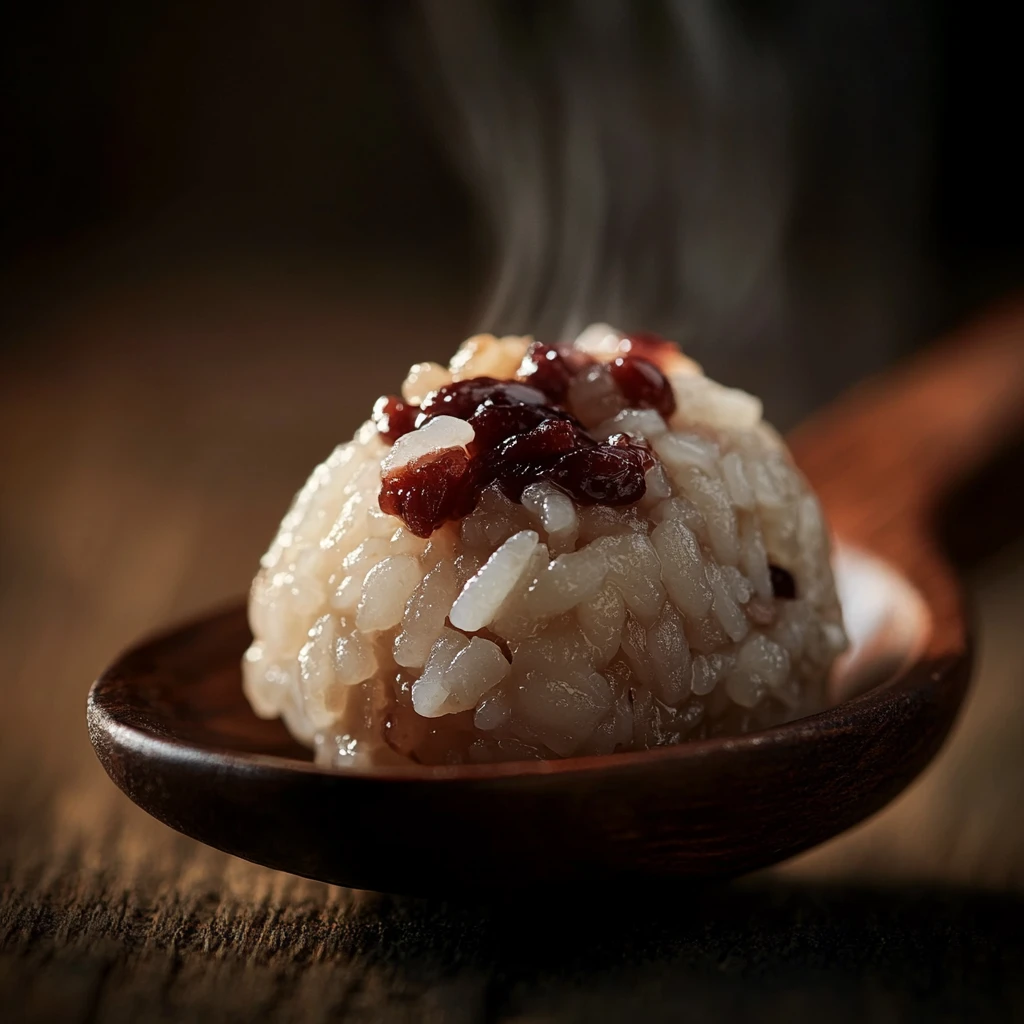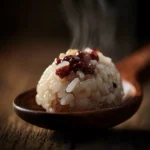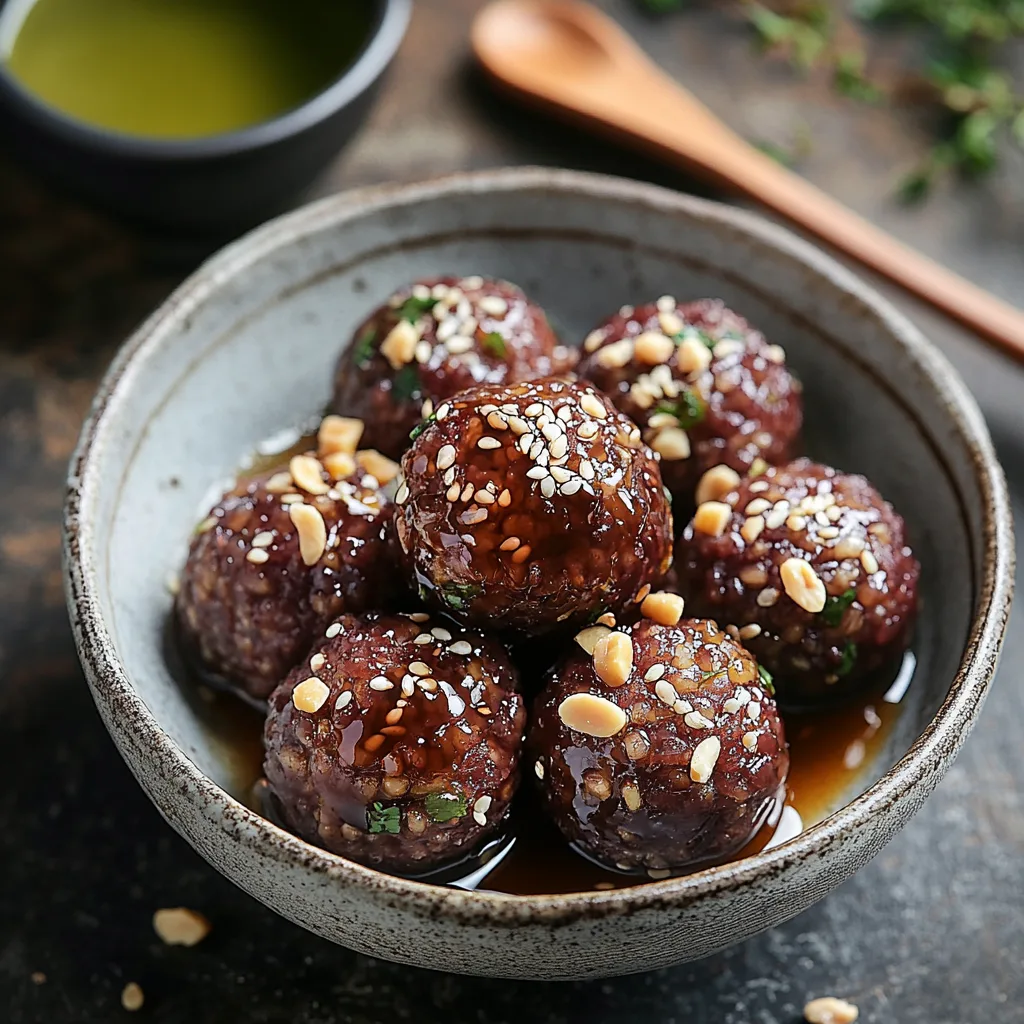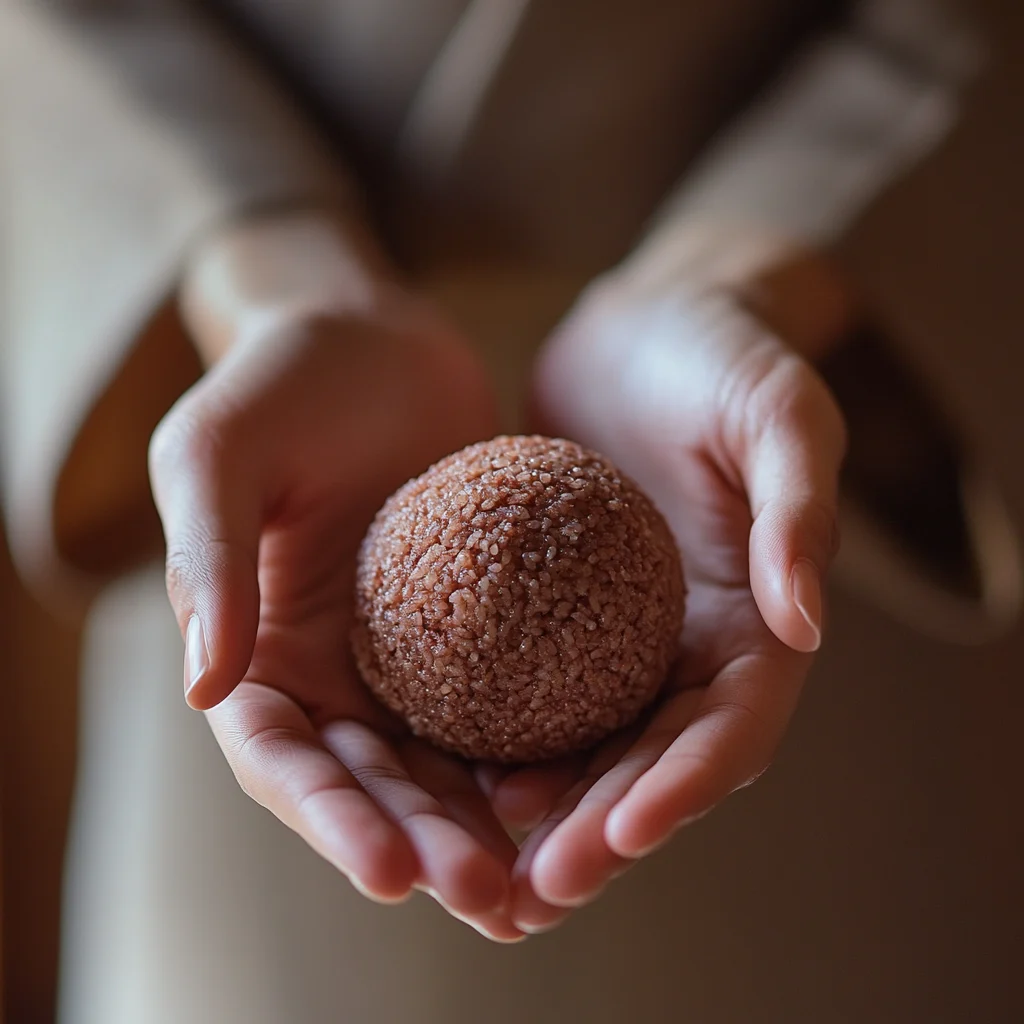
Red bean rice balls: delicious, comforting, and versatile! Ever wondered, “how do you eat red bean rice balls?” You’re in the right place! This guide explores the art, culture, and joy of enjoying them. Whether you’re curious about the best approach or a special way to eat them, we’ll cover everything. Get ready to crave these sweet, sticky treasures. Let’s discover how do you eat red bean rice balls!
What Exactly Are Red Bean Rice Balls?
Before we dive into how to eat them, let’s understand what red bean rice balls are. Known as dou sha tang yuan or azuki mochi, they’re glutinous rice balls filled with sweet red bean paste. “Glutinous” means wonderfully chewy, creating little edible pillows of joy. The soft, sticky rice paired with the rich, sweet filling is irresistible. Now you know what they are, let’s explore how do you eat red bean rice balls!
The Core Ingredients
The magic lies in the glutinous rice and red bean paste. Glutinous rice (sweet rice) has more starch, creating that signature sticky, chewy texture, perfect for holding its shape. When thinking about how do you eat red bean rice balls you also need to consider the importance of the texture and the ingredients.
The red bean paste, made from sweet, nutty adzuki beans, is cooked and mashed into a smooth, often sweetened paste. This gives red bean rice balls incredible depth of flavor. This combination makes the question, “how do you eat red bean rice balls” even more enjoyable.
Cultural Significance and Variations
Red bean rice balls hold cultural significance, often eaten during festivals and family gatherings. In China, tang yuan symbolize family unity during the Lantern Festival. In Japan, mochi is a New Year staple. Preparation and consumption vary greatly. Some are coated with sesame seeds, others served in sweet soup, and some are even grilled for a smoky flavor. Each variation offers a new way to enjoy this simple treat.
Think of them like the cultural equivalent of a hug—warm, comforting, and always there to bring a little joy.
Print
Demystifying the Delight: The Expert’s Guide on How to Eat Red Bean Rice Balls
- Total Time: at least 5 hours
- Yield: Varies depending on the batch size
- Diet: Vegetarian
Description
Sweet glutinous rice balls filled with sweet red bean paste, often enjoyed in Asian cultures during special occasions and festivals. They are known for their soft, chewy texture and rich, sweet flavor.
Ingredients
- Glutinous rice (also known as sweet rice)
- Adzuki beans (for red bean paste)
- Sugar (for red bean paste and possibly to adjust sweetness)
- Water
- Optional: sesame seeds, crushed peanuts, honey, condensed milk, matcha powder, soy sauce, chili sauce, or other toppings for serving.
Instructions
- Warming: If refrigerated, warm the rice balls by steaming them for 5-10 minutes or microwaving them with a little water for 30-60 seconds.
- Serving: Place warmed rice balls on a plate or serve in a warm broth or alongside other accompaniments.
Home-Made Variation:
- Rice Preparation: Rinse glutinous rice and soak for at least 4 hours or overnight.
- Rice Cooking: Steam the soaked rice for 20-30 minutes until cooked and sticky.
- Red Bean Paste (From Scratch): Soak adzuki beans overnight, then simmer until very soft. Mash with sugar and a pinch of salt, and cook until thickened into a paste. (Alternatively use a store bought paste)
- Assembly: Shape steamed rice into balls with a small indent, fill with red bean paste, close the rice, and form a perfect ball.
- Serve immediately.
- Prep Time: At least 4 hours for soaking the rice, 20 mins for bean soaking, 20-30 mins for the paste cooking.
- Cook Time: 20-30 minutes
- Category: Dessert, Snack
- Method: Steaming, Boiling
- Cuisine: Chinese, Japanese
Keywords: Red Bean Rice Balls, Tang Yuan, Azuki Mochi, Glutinous Rice, Sweet Rice, Red Bean Paste, Asian Dessert, Sticky Rice Balls
Preparing to Eat: Essential Tips
Now that you know what these are, let’s get you ready to enjoy them! The preparation is key to a great experience. It’s not just about popping them straight from the fridge to your mouth. There’s a little art to it.
Warming Up Your Rice Balls
First, warm them up if they’ve been refrigerated. Cold rice balls are less enjoyable. Options: steaming (5-10 minutes) retains softness, or microwaving (30-60 seconds with a little water) works too. Be careful, they get hot! Aim for a warm, soft, and pliable texture.
Choosing Your Serving Style
Next, consider your serving style: straight up, in broth, or with accompaniments? If serving alone, plate them nicely for appeal. If in soup, ensure the broth is warm for added flavor. Setting the right mood enhances your red bean rice ball experience! Presentation matters as much as taste.
The Art of Eating Red Bean Rice Balls: A Step-by-Step Guide
Now for the fun part – actually eating these delightful treats! It might seem straightforward, but there’s a bit of finesse that can elevate your experience. It’s about savoring the textures, appreciating the flavors, and finding joy in each bite.
The First Bite: Tasting the Texture
Upon the first bite, notice the texture. The outer layer should be soft, yielding, slightly sticky, and chewy – not tough or crunchy. This pillow-like softness is unique, thanks to the glutinous rice. It’s the kind of texture you want to squish (then eat!). It’s an interesting contrast to the smooth paste inside.
Mastering the Sweetness and Savory Balance
Now, the flavor! Biting into the sweet, rich red bean paste is where the magic happens. The mild, subtly sweet rice balances the deep, satisfying sweetness of the red bean. It’s a harmonious experience, a balanced mix of the sweet filling and the neutral rice, creating a delightful mouthful. It shouldn’t be overwhelmingly sweet.
Think of it like a perfectly tuned instrument—each component works in harmony to create a symphony of flavor in your mouth.
Common Problems and How to Solve Them
Let’s be real – sometimes things don’t go as planned, even with something as delightful as red bean rice balls. But don’t fret! Most common issues can be easily fixed with a little know-how.
The Sticky Situation: Dealing with Clingy Rice
One common problem is stickiness. Glutinous rice can be clingy. The solution? Water or oil! Lightly wet your hands or utensils, and the rice balls will slide right off for a cleaner, less frustrating experience.
Too Sweet or Not Sweet Enough? Adjusting the Flavor
Another issue: sweetness level. If too sweet, pair with something savory, like a light soy sauce glaze, or take smaller bites. If not sweet enough, add a drizzle of honey or maple syrup. Food is adaptable, so experiment and personalize it to your taste!
Finding the Perfect Softness: When Rice Balls Are Too Hard
Finally, if you find that your rice balls are a little too hard, particularly if they’ve cooled down too much, don’t worry. You can easily fix this by reheating them using the methods we already discussed – either steaming them or a quick zap in the microwave. Just make sure you add a little moisture to prevent them from drying out. The goal is to bring them back to that wonderfully soft and chewy state.
It’s like bringing a wilting flower back to life with a little water, so be patient with your little rice ball buddies!
Beyond the Basics: Unique Ways to Enjoy Red Bean Rice Balls
Okay, so we’ve covered the fundamentals, but what about taking things up a notch? Red bean rice balls are incredibly versatile, and there’s a whole world of delicious possibilities beyond the basic serving methods. Let’s get creative!

Pairing Ideas: What to Drink and Eat Alongside
Pairing suggestions: Warm green tea or jasmine tea balances the sweetness. If not tea, try cold milk or light fruit juice. The key is a complementary, not overpowering, beverage.
For side dishes, consider contrasting flavors. Pickled vegetables, a light salad with sesame dressing, or cucumber slices offer a refreshing break from the sweetness. The goal is a balanced, engaging meal.
Creative Toppings and Dips
Now, let’s get into the really fun part – toppings and dips! If you’re feeling adventurous, try drizzling your red bean rice balls with a little condensed milk for extra sweetness and creaminess. For a nutty twist, sprinkle them with roasted sesame seeds or crushed peanuts. A light dusting of matcha powder can also add a delightful earthy flavor.
If you prefer a dipping sauce, consider a simple mixture of soy sauce and honey or a sweet and spicy chili sauce. The possibilities are truly endless. Don’t be afraid to experiment and find your own unique combination! It’s like having your own personal culinary lab, and your tastebuds are the scientists!
“The only limit to your enjoyment of food is the limit of your imagination.” – I made that up, but it is true!
Making Your Own: A Basic Recipe and Tips
Feeling inspired? Why not try making your own red bean rice balls? It might seem a little daunting at first, but it’s actually quite a rewarding experience.
Rice Selection and Preparation
Making them yourself? First, choose glutinous rice (Asian grocery stores). Rinse thoroughly, then soak in water for at least 4 hours (or overnight) to soften it. Drain and steam until cooked and sticky, but not mushy (20-30 minutes). Undercooked rice will be tough.
Red Bean Paste Made Easy
For the filling: either make red bean paste from scratch or buy it pre-made. To make it: soak dried adzuki beans overnight, simmer until very soft, then mash with sugar and a pinch of salt. Cook down to a thick paste. Shape steamed rice into balls with an indent, add red bean paste, close, form a ball, and serve! Making your own allows you to control the sweetness.
“Cooking is like painting or writing a song. Just as there are only so many notes or colors, there are only so many flavors—it’s how you combine them that sets you apart.” – Wolfgang Puck (kinda, but I’m not quoting it directly)
Expanding Your Culinary Horizons
While red bean rice balls offer a uniquely satisfying sweet treat, the world of culinary delights is vast and varied. If you’re eager to explore more delicious options, consider diving into some savory favorites with these Southern BBQ Cheese Recipes, perfect for a hearty meal. For a rewarding baking experience, why not try crafting your own Ultimate Sourdough Bagels at home? And if you’re craving something truly decadent, explore the trend of making Dubai Chocolate Bars or even try your hand at a delightful Best Homemade Churro Cheesecake. These recipes showcase the incredible diversity of flavors and techniques available to the adventurous home cook.
Red Bean Rice Ball Fun Facts and Trivia
Did you know that red bean rice balls have been enjoyed for centuries? They are a beloved treat in many parts of Asia, each region having its unique twist on the dish. In some places, they are a symbol of good luck and prosperity! It’s fascinating how something so simple can carry so much cultural meaning. Who would have thought a simple ball of rice and beans could be so rich in history and tradition?

The Final Bite: Enjoying This Culinary Adventure
And there you have it! You’re now equipped to confidently eat, enjoy, and even create your own red bean rice ball masterpiece. Embrace the textures, savor the flavors, and appreciate the cultural richness. Whether pro or newbie, I hope this guide has helped you appreciate these little balls of joy. Go ahead, take a bite, and enjoy!
